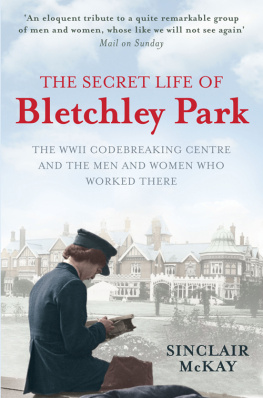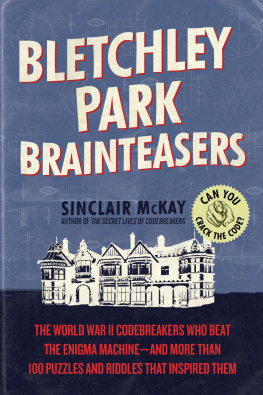Sinclair McKay - Dresden: The Fire and the Darkness
Here you can read online Sinclair McKay - Dresden: The Fire and the Darkness full text of the book (entire story) in english for free. Download pdf and epub, get meaning, cover and reviews about this ebook. year: 2019, publisher: Penguin Books Ltd, genre: Non-fiction. Description of the work, (preface) as well as reviews are available. Best literature library LitArk.com created for fans of good reading and offers a wide selection of genres:
Romance novel
Science fiction
Adventure
Detective
Science
History
Home and family
Prose
Art
Politics
Computer
Non-fiction
Religion
Business
Children
Humor
Choose a favorite category and find really read worthwhile books. Enjoy immersion in the world of imagination, feel the emotions of the characters or learn something new for yourself, make an fascinating discovery.
- Book:Dresden: The Fire and the Darkness
- Author:
- Publisher:Penguin Books Ltd
- Genre:
- Year:2019
- Rating:3 / 5
- Favourites:Add to favourites
- Your mark:
- 60
- 1
- 2
- 3
- 4
- 5
Dresden: The Fire and the Darkness: summary, description and annotation
We offer to read an annotation, description, summary or preface (depends on what the author of the book "Dresden: The Fire and the Darkness" wrote himself). If you haven't found the necessary information about the book — write in the comments, we will try to find it.
Dresden: The Fire and the Darkness — read online for free the complete book (whole text) full work
Below is the text of the book, divided by pages. System saving the place of the last page read, allows you to conveniently read the book "Dresden: The Fire and the Darkness" online for free, without having to search again every time where you left off. Put a bookmark, and you can go to the page where you finished reading at any time.
Font size:
Interval:
Bookmark:

PENGUIN BOOKS
UK | USA | Canada | Ireland | Australia
India | New Zealand | South Africa
Penguin Books is part of the Penguin Random House group of companies whose addresses can be found at global.penguinrandomhouse.com.

First published 2020
Copyright Sinclair McKay, 2020
The moral right of the author has been asserted
Cover image Everett Collection Inc/Alamy Stock
The picture credits on constitute an extension of this copyright page
Maps illustrated by Ian Moores
ISBN: 978-0-241-98602-8
This ebook is copyright material and must not be copied, reproduced, transferred, distributed, leased, licensed or publicly performed or used in any way except as specifically permitted in writing by the publishers, as allowed under the terms and conditions under which it was purchased or as strictly permitted by applicable copyright law. Any unauthorized distribution or use of this text may be a direct infringement of the authors and publishers rights and those responsible may be liable in law accordingly.
Dresden from the Right Bank of the Elbe Below the Augustus Bridge, Bernardo Bellotto, c.1750.
The stable courtyard of Dresdens castle, c.1930s.
The Semper Opera House.
Panorama overlooking the Altstadt in the 1930s.
The Altmarkt.
Dresdens central railway station.
The pre-war Frauenkirche.
Dresden tourist poster.
Dresden porcelain.
Poster for Dresdens Hygiene Exhibition, 1911.
Hitler in front of the Zwinger Palace, 1934.
Richard Strauss.
Hitler at an exhibition of degenerate art, 1933.
The Duke of Windsor visiting Dresden, 1937.
Members of the League of German Girls.
Martin Mutschmann at an exhibition of folk art.
Dr Albert Fromme.
Otto Dix.
Professor Victor Klemperer.
Otto Griebel.
Air Chief Marshal Sir Arthur Harris at Bomber Command.
Miles Tripp and his bomber crew.
Kurt Vonnegut.
Cookie bombs being dropped on Dresden.
The fiercely burning streets from above.
Bombers release their payloads.
The firestorm seen from a distance.
A bombed city street.
Emergency teams dealing with the corpses.
The already pulverized city prior to the American raid of 14 February.
Richard Peters famous photograph of the devastation.
Bodies awaiting identification.
A makeshift funeral pyre in the central market square.
The shattered area south of the Elbe.
Refugee children on the streets of the city.
Another of Dresdens fragmented streets.
Rail tracks, laid to help clear the streets of rubble.
Volunteers clearing debris by hand.
The damaged Zwinger Palace.
Hastily erected road signs in Russian.
A Soviet propaganda poster: Learning from the Soviet people.
The ruins inspired both fear and poetry.
Sheep grazing near the ruined Frauenkirche.
Hill and Ploughed Field Near Dresden, Caspar David Friedrich, c.1824.
A detail from the Communist Culture Palace mural Way of the Red Flag.
A tower block bearing the exhortation: Socialism wins.
The Procession of Princes mural in the castle stable courtyard.
Dresdens 1960s large-scale housing constructions.
The Prager Strasse shopping area, remodelled after the war.
Futuristic housing in Prager Strasse.
Vladimir Putin during his Dresden posting in the 1980s.
The choir of the Kreuzkirche with cantor Rudolf Mauersberger.
Elsa Frlich.
Erich Kstner.
Professor Heinrich Barkhausen.
The Altstadt as restored by the Soviets.
The rebuilt Frauenkirche.
The Frauenkirche interior.
The majority of the photographs come from private collections. Others are from: , Deutsche Fotothek. Every reasonable effort has been made to trace copyright but the publisher welcomes any information that clarifies the copyright ownership of any unattributed material displayed and will endeavour to include corrections in reprints.



By the castle wall, and in the shadow of the Catholic cathedral, winter twilight can occasionally bring an arresting effect. If you glance around, it is possible, just for a fleeting moment, that you will find yourself alone. And here in this triangle of cobbled paving and sculptured stone the Schlossplatz, overlooked by the grand archway leading through to the castle courtyard, the church spire high and sharp against the amethyst sky time can smoothly slip its moorings.
If you are knowledgeable about the history of art, you might imagine yourself in the early nineteenth century, a figure frozen in a painting by the Romantic artist Caspar David Friedrich, who lived in Dresden and depicted its steeples and domes, suffused in a lemon sunlight. You might allow yourself to roam yet further back: inhabiting a richly detailed Bellotto landscape. He too was drawn to the architectural elegance the wide market squares and beautifully proportioned houses and civic buildings of the city in the eighteenth century. Stand there long enough and there will be the music that those artists heard too: the bells of the cathedral. They strike, with some urgency, and clamour, and with a deeper, resonant note that sounds like anger.
And it is in this near-discordancy that the more recent, terrible past is also summoned, unbidden; many who stand or walk here now, cannot help imagining, even for a moment, the bass drone of the aeroplanes overhead; the sky bright with green and red marker flares; and then roaring flames in the gutted cathedral rising ever higher.
Such visions are not confined to this one spot. Just a few yards from this square is the elegant terrace that overlooks the River Elbe and its curiously wide banks. Now, as then, this stone walkway stretches along to the Academy of Arts with its glittering glass dome. Just as with the Catholic cathedral, any stroll along here somehow takes place in two different time streams; you are there, in the present, gazing along the curving valley of the Elbe; and at the same time, you are seeing, against the clear cold night sky, the hundreds of bombers swooping in from the west. You envisage the terrified crowd of people around you, trying to escape the furnace flare heat, making as if by instinct for the river. This is the macabre truth of Dresden: every vision of beauty carries a split-second awareness of the most terrible violence. All visitors to this city will have felt that momentary dislocation. Unease would be the wrong word; the sensation is not ghostly. But there is a sharp cruelty about the juxtaposition of the fairy-tale architecture and the knowledge of what lies beneath it. And of course illusion is built upon illusion: for much of the fairy-tale architecture we see today was previously obliterated in the cataclysm.
Font size:
Interval:
Bookmark:
Similar books «Dresden: The Fire and the Darkness»
Look at similar books to Dresden: The Fire and the Darkness. We have selected literature similar in name and meaning in the hope of providing readers with more options to find new, interesting, not yet read works.
Discussion, reviews of the book Dresden: The Fire and the Darkness and just readers' own opinions. Leave your comments, write what you think about the work, its meaning or the main characters. Specify what exactly you liked and what you didn't like, and why you think so.











